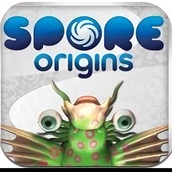ASP.NET MVC自定义验证Authorize Attribute
那今次Insus.NET在ASP.NET MVC实现自定义验证Authorize Attribute。
实现之前,Insus.NET对usp_Users_VeryLoginVerify修改一下,改为更好理解与使用:
SET ANSI_NULLS ON
GO
SET QUOTED_IDENTIFIER ON
GO
ALTER PROCEDURE [dbo].[usp_Users_VeryLoginVerify]
(
@U_nbr NVARCHAR(20),
@pwd NVARCHAR(100)
)
AS
BEGIN
DECLARE @errmsg NVARCHAR(50) = N'用户名或密码错误。'
IF NOT EXISTS(SELECT TOP 1 1 FROM [dbo].[Users] WHERE [U_nbr] = @U_nbr)
BEGIN
RAISERROR(@errmsg,16,1)
RETURN
END
SELECT [U_nbr] AS [Account] FROM [dbo].[Users] WHERE [U_nbr] = @U_nbr AND CONVERT(NVARCHAR(100),DECRYPTBYPASSPHRASE('insus#sec!%y',[Pwd])) = @pwd
IF @@ROWCOUNT
BEGIN
RAISERROR(@errmsg,16,1)
RETURN
END
END
Source Code
OK,上面是数据库方面。
接下你需要在ASP.NET MVC写程序:
使用Cookie来存储登录以及验证信息,写一个Cookie类别:
using System;
using System.Collections.Generic;
using System.Linq;
using System.Web;
namespace Insus.NET.Utilities
{
public abstract class CookieBase
{
private static HttpResponse Response
{
get
{
return HttpContext.Current.Response;
}
}
private static HttpRequest Request
{
get
{
return HttpContext.Current.Request;
}
}
public static HttpCookie Cookie
{
get
{
return Request.Cookies["CookieBase"] as HttpCookie;
}
set
{
if (Request.Cookies["CookieBase"] != null)
{
Request.Cookies.Remove("CookieBase");
}
Response.Cookies.Add(value);
}
}
public static HttpCookie NewCookie
{
get
{
return new HttpCookie("CookieBase");
}
}
public static void RemoveCookie()
{
if (Cookie == null)
Response.Cookies.Remove("CookieBase");
else
Response.Cookies["CookieBase"].Expires = DateTime.Now.AddDays(-1);
}
}
}
Source Code
其实上面这个CookeBase.cs是一个能存储多对象的集合类。在真正的程序中,你想存储什么信息,可以写一个如下面的类来操作:
using System;
using System.Collections.Generic;
using System.Linq;
using System.Text;
using System.Threading.Tasks;
using System.Web;
namespace Insus.NET.Utilities
{
public class SecurityBase
{
public static bool IsAuthorized
{
get
{
return CookieBase.Cookie == null ? false : bool.Parse(CookieBase.Cookie.Values["IsAuthorized"]);
}
set
{
HttpCookie httpCookie = CookieBase.Cookie == null ? CookieBase.NewCookie : CookieBase.Cookie;
httpCookie.Values["IsAuthorized"] = value.ToString();
CookieBase.Cookie = httpCookie;
}
}
public static string UserName
{
get
{
return CookieBase.Cookie == null ? string.Empty : CookieBase.Cookie.Values["UserName"];
}
set
{
HttpCookie httpCookie = CookieBase.Cookie == null ? CookieBase.NewCookie : CookieBase.Cookie;
httpCookie.Values["UserName"] = value;
CookieBase.Cookie = httpCookie;
}
}
public static void RemoveCooke()
{
CookieBase.RemoveCookie();
}
}
}
Source Code
接下来,我们需要创建一个验证过滤器:
using System;
using System.Collections.Generic;
using System.Linq;
using System.Text;
using System.Threading.Tasks;
using System.Web;
using System.Web.Mvc;
using Insus.NET.Utilities;
using System.Web.Routing;
namespace Insus.NET.Attributes
{
public class SecurityAuthorizeAttribute : AuthorizeAttribute
{
protected override bool AuthorizeCore(HttpContextBase httpContext)
{
return SecurityBase.IsAuthorized;
}
public override void OnAuthorization(AuthorizationContext filterContext)
{
string controllerName = filterContext.ActionDescriptor.ControllerDescriptor.ControllerName;
string actionName = filterContext.ActionDescriptor.ActionName;
base.OnAuthorization(filterContext);
}
protected override void HandleUnauthorizedRequest(AuthorizationContext filterContext)
{
var routeValue = new RouteValueDictionary {
{ "Controller", "Home"},
{ "Action", "Index"}
};
filterContext.Result = new RedirectToRouteResult(routeValue);
}
}
}
Source Code
这个过滤器SecurityAuthorizeAttribute.cs,稍后我们会在控制器中应用到它。
接下你需要写控制器了,不,我们似乎少写了一些物件,如model和Entity:
Models写好,还差一个Entity,这个实体是与数据连接的物件:
在ASP.NET MVC中,实现登录验证的演示,最少需要两个控制器,一个是给匿名用户访问的,它包含普通的页面和一些基本的操作。另一个控制器是经过验证通过之后才能访问的页面。
另一个控制器:
最后是创建视图了:
@{
Layout = null;
}
css">
#logincontact label {
display: inline-block;
text-align: right;
}
#logincontact_submit {
padding-left: 100px;
}
#logincontact div {
margin-top: 1em;
}
.error {
display: none;
margin-left: 10px;
}
.error_show {
color: red;
margin-left: 10px;
}
input.invalid {
border: 2px solid red;
}
input.valid {
border: 2px solid green;
}
$('#logincontact_Password').on('input', function () {
var input = $(this);
var is_Password = input.val();
if (is_Password) {
input.removeClass("invalid").addClass("valid");
}
else {
input.removeClass("valid").addClass("invalid");
}
});
$('#ButtonSignIn').click(function (event) {
var form_data = $("#logincontact").serializeArray();
var error_free = true;
for (var input in form_data) {
var element = $("#logincontact_" + form_data[input]['name']);
var valid = element.hasClass("valid");
var error_element = $("span", element.parent());
if (!valid) {
error_element.removeClass("error").addClass("error_show");
error_free = false;
}
else {
error_element.removeClass("error_show").addClass("error");
}
}
if (!error_free) {
event.preventDefault();
}
else {
var obj = {};
obj.Account = $('#logincontact_Account').val(),
obj.Password = $('#logincontact_Password').val()
$.ajax({
type: 'POST',
url: '/Home/LoginVerify',
dataType: 'json',
data: JSON.stringify(obj),
contentType: 'application/json; charset=utf-8',
success: function (data, textStatus) {
alert("登录成功。");
window.location.href = "/User/Index";
},
error: function (XMLHttpRequest, textStatus, errorThrown) {
alert(errorThrown);
},
});
}
});
});
//]]>
Source Code
还有一个:
@{
Layout = null;
}
$('#ButtonSignOut').click(function (event) {
$.ajax({
type: 'POST',
url: '/Home/SignOut',
contentType: 'application/json; charset=utf-8',
success: function (data, textStatus) {
alert("已经安全退出网站。");
window.location.href = "/Home/Index";
},
error: function (XMLHttpRequest, textStatus, errorThrown) {
alert(errorThrown);
},
});
});
});
//]]>
Hi @ViewBag.UserName
Source Code
相关文章
精彩推荐
-
 下载
下载孢子2生物进化中文版(Spores)
模拟经营 孢子2生物进化中文版(Spores)孢子2生物进化中文版让我们来做一回疯狂的博士,打造一个属于自
-
 下载
下载叫我万岁爷九游官方版
模拟经营 叫我万岁爷九游官方版叫我万岁爷带你体验当换地点感觉,全新的模拟手游大作让你开始一
-
 下载
下载梦回凤歌
模拟经营 梦回凤歌梦回凤歌手游中你将步入古代的宫廷纷争之中,本想度过美好幸福的
-
 下载
下载洋果子店rose最新版本
模拟经营 洋果子店rose最新版本洋果子店最新版是一款十分容易让人垂涎的开店经营类手游。游戏玩
-
 下载
下载明日大亨最新版
模拟经营 明日大亨最新版明日大亨手游,一个非常经典有趣的模拟经营类型的商战手游,在游















